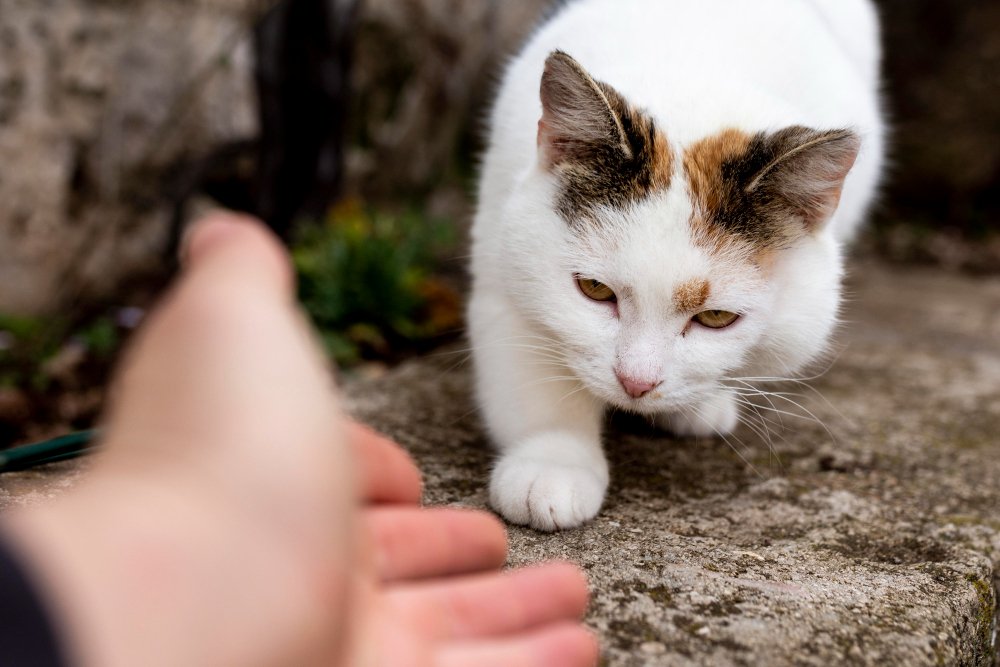Training Cats Through Play” isn’t only about enjoyment; it’s a critical component of their developmental process. Engaging in activities like chasing toys or batting at strings goes beyond amusement—it’s a key part of training and behavior modification for felines. Such playful interactions are not just entertaining but are instrumental in refining their physical abilities, sharpening their predatory instincts, and cementing the relationship between pet and owner. This article delves into how play is integral to training cats and molding their behavior, demonstrating that playtime is more than just fun—it’s essential for nurturing a contented and well-mannered cat.
Understanding Cat Behavior
Cats are fascinating creatures with unique behaviors rooted in their natural instincts and social structures. By understanding these behaviors, you can develop a deeper bond with your feline friend and create a harmonious environment for both of you to thrive in.
Instinctual behavior
Cats are natural hunters, and many of their behaviors stem from this instinct. They may pounce on moving objects, stalk their prey (or even their human companions), and exhibit territorial behavior. Understanding their instinctual behavior can help you provide appropriate outlets for their natural behaviors in a safe and controlled manner.
Communication methods
Communication plays a crucial role in a cat’s behavior. Cats use a variety of methods to express their needs, emotions, and intentions. They communicate through body language, vocalizations such as meowing, purring, hissing, and growling, as well as scent marking. Being aware of these communication methods will enable you to better understand your cat’s moods and respond accordingly.
Hierarchy in cat social structure
Cats have a hierarchical social structure, with each cat recognizing its place within the hierarchy. This social order impacts their behavior and interactions with other cats and even humans. Understanding the hierarchy in cat social structure can help you navigate their social dynamics, prevent conflicts, and establish your role as a trusted leader in their lives.
Importance of Training and Shaping Cat Behavior
Training plays a vital role in shaping a cat’s behavior, promoting their mental stimulation, establishing boundaries and rules, and enhancing the bond between you and your furry companion.
Promotes mental stimulation
Training provides cats with mental stimulation, engaging their natural curiosity and intelligence. It helps prevent boredom and the development of destructive behaviors that may result from a lack of mental stimulation. Training challenges their minds, keeps them sharp, and provides them with a sense of accomplishment.
Establishes boundaries and rules
Training allows you to establish boundaries and rules for your cat, ensuring a safe and harmonious living environment. By teaching them commands and reinforcing positive behavior, you can guide them to know what is expected of them. Clear boundaries and rules help cats feel secure and confident in their surroundings.
Enhances the cat-owner bond
Training sessions give you an opportunity to bond with your cat on a deeper level. Through positive reinforcement and consistent training, you build trust and strengthen your relationship. This bond enables effective communication between you and your cat, leading to a happier and more fulfilling companionship.
Types of Training Methods
Various training methods can be employed to shape a cat’s behavior. Each method focuses on positive reinforcement, using rewards to encourage desired behavior and redirecting or ignoring unwanted behavior.
Positive reinforcement training
Positive reinforcement training involves rewarding your cat with treats, praise, or play whenever they exhibit desired behavior. This method encourages cats to repeat the behavior they are being rewarded for, making it an effective tool in training and shaping their behavior.
Clicker training
Clicker training involves using a clicker to mark and reinforce desired behavior. The clicker serves as a marker to let the cat know they have done something right, followed by a reward. The sound of the clicker becomes associated with a positive outcome, making it a powerful tool in training and shaping their behavior.
Target training
Target training involves teaching your cat to touch a specific object, such as a stick or your hand, with their nose or paw. By associating this behavior with a reward, you can guide and shape their behavior. Target training is especially useful for teaching cats tricks or getting them to perform specific actions.
Desensitization and counterconditioning
Desensitization and counterconditioning are techniques used to change a cat’s response to a specific stimulus or situation. By gradually exposing them to the triggering stimulus in a controlled and positive environment, and rewarding calm behavior, you can help your cat overcome fears or anxieties and shape their behavior.
Role of Play in Training and Shaping Cat Behavior
Playtime is not just about providing entertainment for your cat. It also plays a crucial role in training and shaping their behavior. Through play, you can engage their natural instincts, provide physical exercise, and develop their coordination and problem-solving skills.
Engages natural hunting instincts
Play allows cats to engage in activities that tap into their natural hunting instincts. By providing appropriate toys and interactive play sessions, you can satisfy their predatory needs and prevent them from resorting to undesirable behaviors such as scratching furniture or chasing your feet.
Provides physical exercise
Regular play sessions contribute to a cat’s overall physical health. Through play, they engage in vigorous activities that help burn off excess energy, maintain a healthy weight, and keep their muscles strong and agile. Adequate exercise reduces the likelihood of obesity-related health issues and provides cats with an outlet for their energy.
Develops coordination and problem-solving skills
Playtime presents opportunities for cats to hone their coordination and problem-solving skills. Interactive toys and puzzles stimulate their minds and require them to think strategically and use their physical abilities to achieve a goal. This mental and physical stimulation helps keep their minds sharp and encourages them to channel their energy into positive outlets.
Choosing Appropriate Cat Toys
When it comes to choosing toys for your cat, it’s important to consider their preferences and safety. Different types of toys serve different purposes and can cater to various aspects of your cat’s behavior.
Interactive toys
Interactive toys, such as puzzle feeders or treat dispenser toys, engage cats mentally and physically. These toys require them to figure out how to obtain the hidden treats, providing mental stimulation and encouraging problem-solving skills.
Puzzle toys
Puzzle toys challenge cats to solve problems to retrieve rewards. They come in various forms, such as treat balls or maze-like structures. These toys provide hours of entertainment and help keep cats mentally engaged.
Feather toys
Feather toys mimic the movement of prey, triggering a cat’s natural hunting instincts. They provide an outlet for your cat to pounce, chase, and fulfill their predatory needs. These toys are particularly well-suited for interactive play between you and your cat.
Wand toys
Wand toys typically consist of a long wand with an enticing attachment at the end, such as feathers or a jingling bell. These toys allow you to interact with your cat, providing an opportunity for bonding and engaging in active play sessions. Wand toys are great for exercise and stimulating your cat’s mental and physical prowess.
Scheduling Playtime Sessions
Creating a regular playtime routine is key to maintaining your cat’s mental and physical well-being. Establishing a consistent schedule helps your cat know when to expect playtime and ensures they receive enough stimulation and exercise.
Regular playtime routine
Set aside specific times each day for playtime. Cats thrive on routine and will come to anticipate these dedicated sessions. Consistency in playtime routines helps reduce anxiety, as cats have a sense of predictability and control over their environment.
Setting aside dedicated playtime
Make playtime a priority by dedicating a specific amount of time each day for interactive play with your cat. Aim for at least 15-30 minutes of playtime to give them an adequate outlet for their energy and provide mental stimulation.
Using play as a reward
Incorporate play as a reward or incentive during training sessions. Cats are more likely to engage in desired behaviors if they know that they will be rewarded with playtime. This not only reinforces good behavior but also makes the training experience enjoyable for your cat.
Incorporating Training into Playtime
Playtime can be an excellent opportunity to incorporate training exercises, further reinforcing desired behaviors and providing mental stimulation.
Using treats as a reward
During playtime, you can reward your cat’s good behavior with treats. For example, if you’re teaching them to come when called, reward them with a treat when they respond to the command. By associating the desired behavior with a treat, you reinforce the training and make it more effective.
Integrating training commands during play
While engaging in play, incorporate training commands into the session. For instance, if your cat has learned to sit on command, ask them to sit before providing them with a toy or initiating play. This reinforces their training while maintaining a fun and interactive environment.
Playing games that reinforce desired behavior
Tailor your playtime activities to encourage and reinforce desired behavior. For example, if you want to deter your cat from scratching furniture, provide them with a scratching post and reward them with playtime and praise when they use it. This way, you redirect their behavior towards an appropriate outlet and create positive associations with the desired behavior.
Addressing Undesirable Behavior Through Play
Play can be an effective tool in addressing and redirecting undesirable behaviors in cats. By engaging in interactive play sessions and providing appropriate outlets for their instincts, you can discourage destructive or aggressive behaviors.
Redirecting destructive behavior
If your cat exhibits destructive behavior, such as scratching furniture or chewing on cords, redirect their attention to appropriate toys and encourage play. Providing them with scratching posts or interactive toys can help redirect their energy and prevent damage to your belongings.
Reducing aggression through interactive play
If your cat displays aggressive behavior, interactive play can help alleviate their aggressive tendencies. Engaging in play sessions that simulate hunting, such as chasing feather toys or providing toys they can “attack,” allows them to release pent-up energy and reduces aggression.
Promoting positive behavior through play
Using play as a positive reinforcement tool can help promote desirable behavior in cats. For example, if your cat uses the litter box consistently, reward them with playtime to reinforce this habit. This positive association encourages them to continue exhibiting the desired behavior.
Supervising Play Between Multiple Cats
If you have multiple cats, it’s essential to supervise their play to ensure a safe and peaceful environment.
Preventing conflicts and aggression
Monitor their interactions closely, especially during play. Cats can become territorial or display dominance behaviors during play sessions. Watch for signs of aggression, such as hissing, growling, or excessive roughness, and intervene if necessary to prevent conflicts.
Creating a peaceful play environment
Provide enough space and toys for each cat to enjoy playtime without competition or conflict. Having separate play areas or multiple toys available can help prevent jealousy or possessiveness during play sessions. This enables each cat to engage in play without feeling threatened by others.
Ensuring fair play and equal opportunities
Be attentive to each cat’s individual needs and ensure that all cats have equal opportunities for play. Rotate toys and engage in separate play sessions with each cat to prevent one cat from dominating playtime and ensure a fair and enjoyable experience for all.
Seeking Professional Help
If you’re facing challenges in training or addressing your cat’s behavior, don’t hesitate to seek professional guidance. Veterinary professionals and animal behaviorists can provide valuable insights and tailored recommendations.
Consulting a veterinarian or animal behaviorist
If you’re struggling to manage your cat’s behavior, consulting a veterinarian or an animal behaviorist can provide expert guidance. They can assess your cat’s unique situation and provide advice specific to their needs, helping you overcome behavioral challenges more effectively.
Participating in cat behavior classes or workshops
Many communities offer cat behavior classes or workshops for owners looking to improve their training techniques and understanding of feline behavior. These classes provide an opportunity to learn from professionals and interact with other cat owners facing similar challenges.
Exploring online resources and educational materials
The internet offers a wealth of resources, including articles, videos, and forums dedicated to cat behavior and training. Online platforms can provide valuable insights and tips from experts and experienced cat owners. However, it’s important to ensure you are accessing reliable sources and seeking information from reputable experts.
In conclusion, playtime is a crucial component of training and shaping a cat’s behavior. By understanding their natural instincts, employing appropriate training methods, and providing engaging play sessions, you can create a balanced and fulfilling environment for your feline companion. Remember to approach training and play with patience, positivity, and respect, and enjoy the journey of strengthening your bond with your furry friend.



